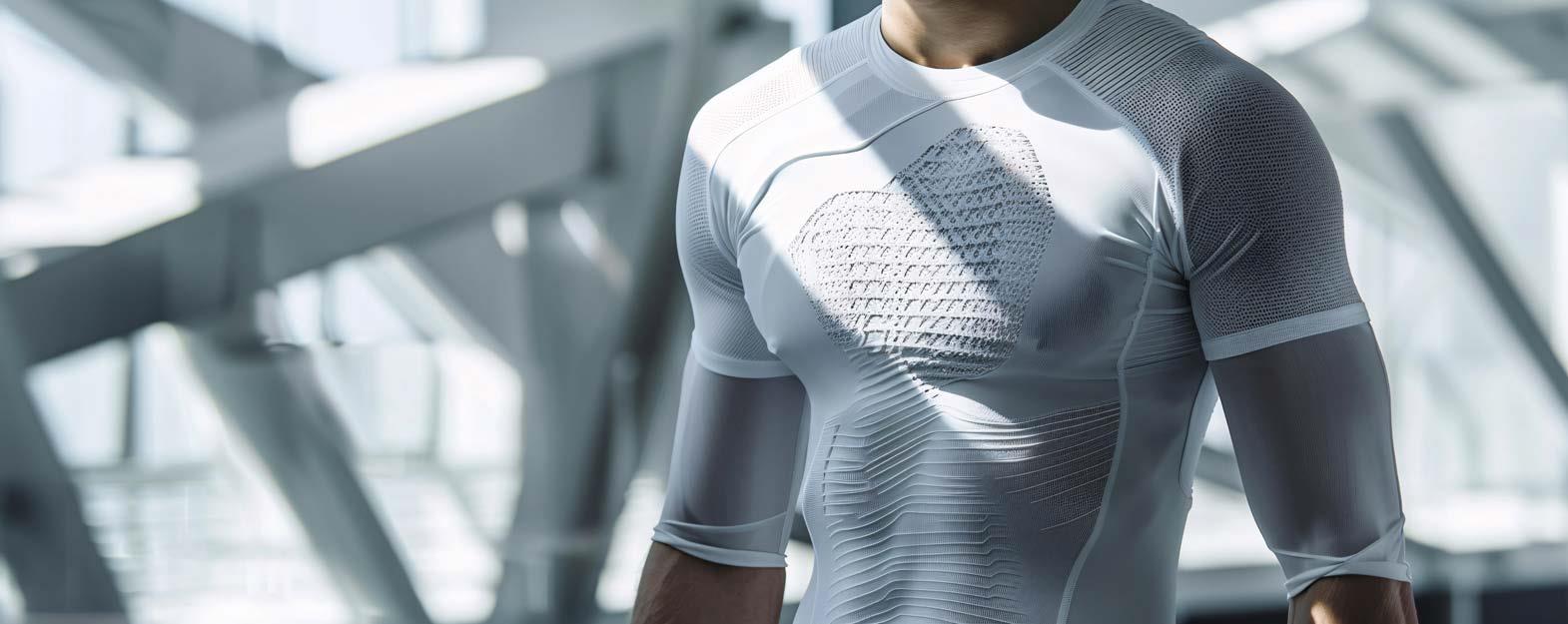The term breathable implies that the fabric is actively ventilated. Breathable fabrics are all about Moisture Vapor Transmission Rate (MVTR), which is the measure of how quickly or slowly moisture passes through a fabric or other substance. MVTR is measured in g/m/day, or the mass of moisture that passes through a square meter of fabric in a day.
Sportswear combines multilayered fabric. The inner layer fabric is capable of whisking away the moist vapor and perspiration from the skin to the outer layer. This process keeps the garment dry, with moisture only on the outer layers. When the objective of sportswear is breathability along with keeping the body warm, the inner cover is usually a microfleece, which is a soft and napped synthetic wool material, usually made from polyester. This keeps the body warm, and in countries where the mercury levels drop drastically, like in European countries, the need for such clothing is important. The players need garments having multilayers as a defense against extremely cold weather. This layer ensures insulation in the body and lets the body breathe by letting perspiration pass through the fleece to the outer layer. As a result, the wearer remains safe from extreme cold conditions and also the excess moisture released by the body. The outer layer of the sports garment must allow sweat molecules to exit through the garment while keeping the wind out.
Moisture can pass through a fabric either by ventilation and solid-state diffusion. For ventilation, a porous fabric is used, as it ensures that air passes directly through it. The air may carry moisture in the form of vapor. In solid-state diffusion, some non-porous fabrics permit the transmission of moisture. In other words, the type of fabric used in manufacturing breathable sportswear is also equally important. There is a school of thought that believes that in getting rid of the perspiration, the basic attribute of the fiber to absorb the moisture plays an important role. Thus, those who support this school of thought believe that cotton or viscose is a necessary element for sportswear. While there is another theory that says that fibers in breathable garments should not absorb moisture so that moisture or perspiration is guided away from the skin to outer layers of clothing from where it can evaporate. As per this theory, synthetics must be the preferred choice in the clothing of active sports as synthetics do not hold moisture, and thus the garments weigh lighter even after the release of excess sweat. Also, fast drying is a must-have trait that breathable sportswear must have, following which, today, modern textile materials use the basic idea of capillary action.
With modifications and consistent research, breathability of the garment is being combined with several other factors like water resistance, odour-free, etc. Sports apparel layers are going through some remarkable technological developments. Manufacturing breathable sports apparel in various combinations will unquestionably raise the level of ease in sports apparel. Such qualities are required in helping players stay dry and confident. Breathable fabrics combined with properties like UV protection, skins and compression garments are intended to enhance performance in sports. The breathable sportswear technology is heading in the progressive direction. The sportswear is now designed to keep the wearer warm, dry, cool, increase performance, help recover quicker and even smell better!
The breathable sportswear must ensure maximum heat and moisture control, good air and water vapour permeability, quick moisture absorption and easy mobility, no signs of dampness, quick drying, minimal water absorption in the layer nearest to the skin, easy care, lightweight and fine feel. Special finishing processes can be used to increase the difference in surface energy between the face of a fabric and the back of the fabric to enhance its ability to keep sweat away from body.
Breathable fabrics are not apt under certain conditions like in high humid weather or when the breathable fabric gets drenched with sweat then the process of ventilation is hindered making the wearer uncomfortable. However, the benefits of the breathable sportswear outweigh the negatives and with so many innovations in line, the breathable sportswear will improve in days to come. Outdoor activities are all about fun and the fun actually becomes better and relaxing when the sports gear allows utmost breathability.
References:
1. Thesourcingplace.com
2. Textilelearner.com
3. Sasmira.org










Comments